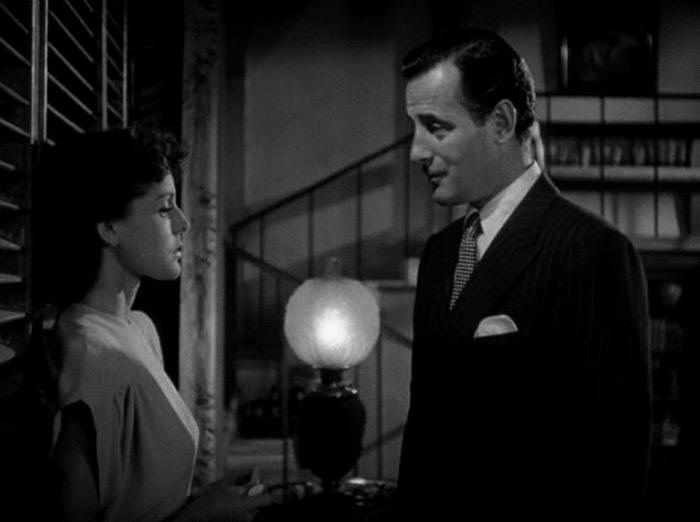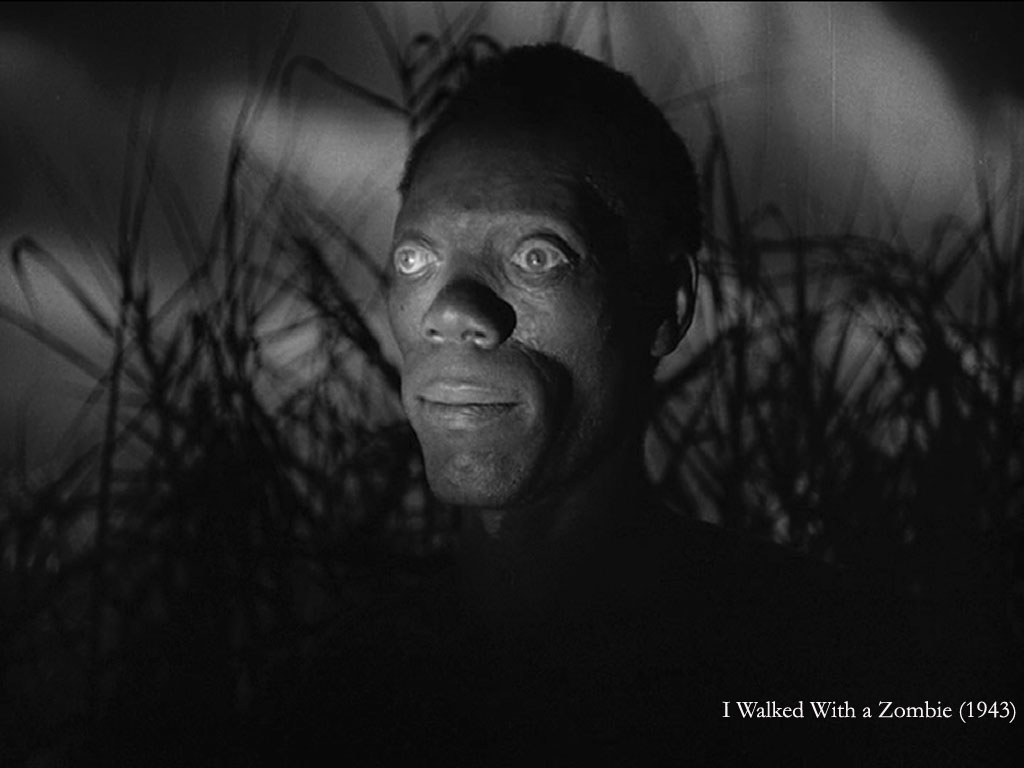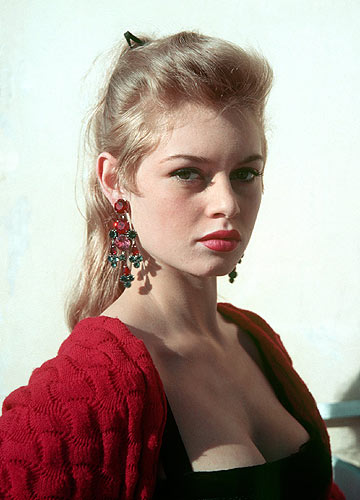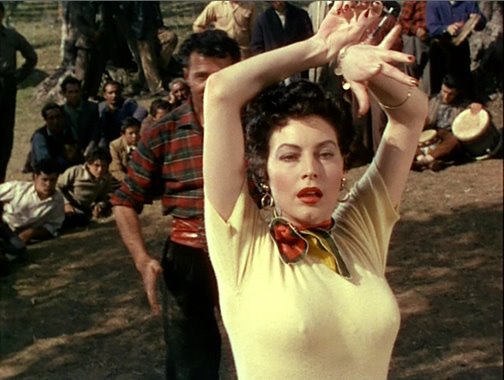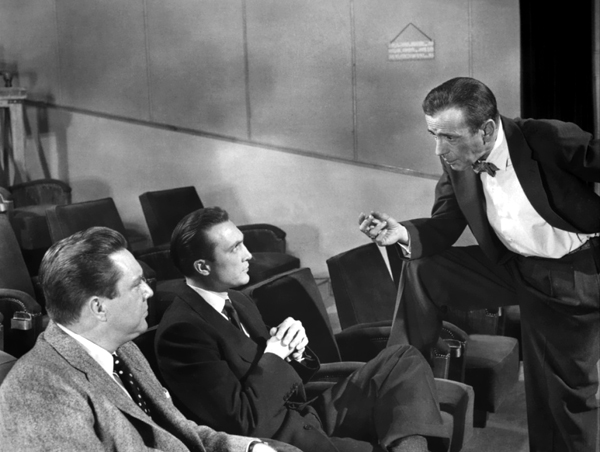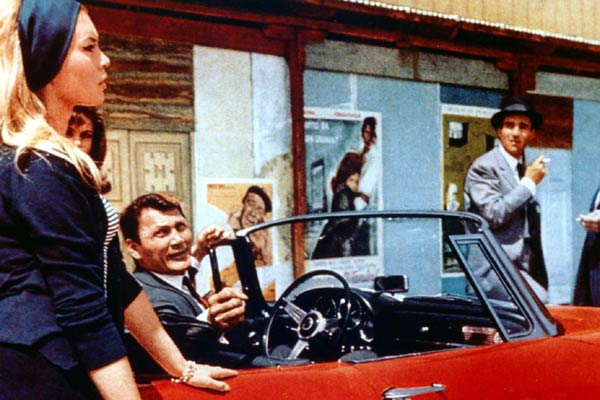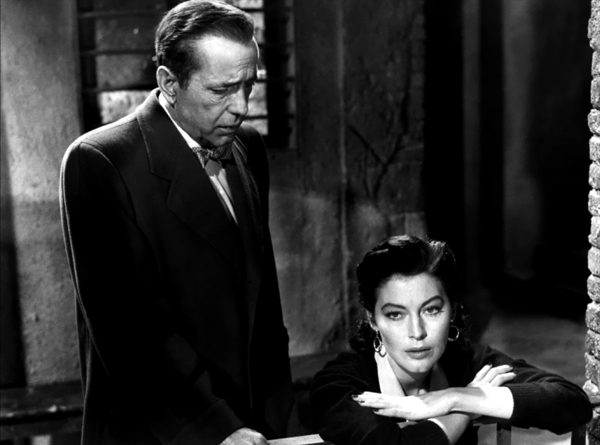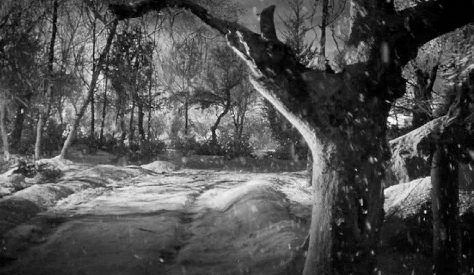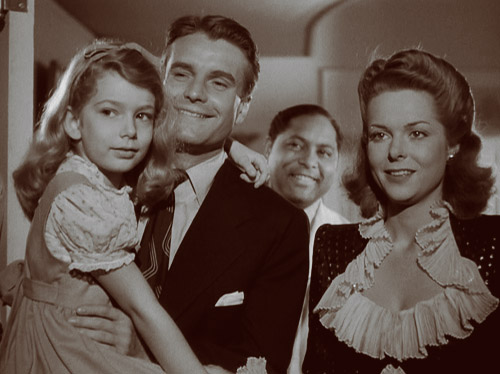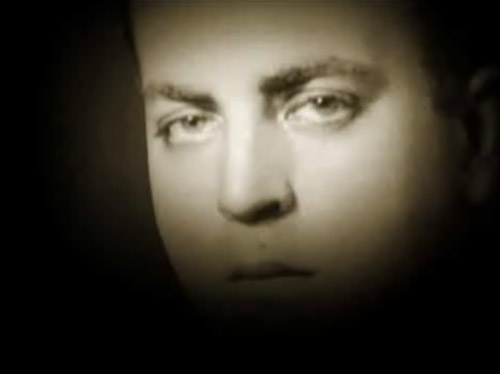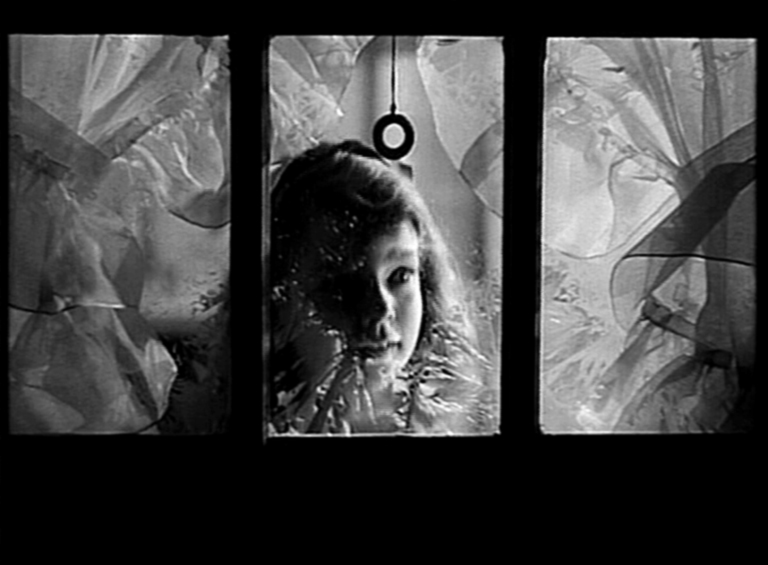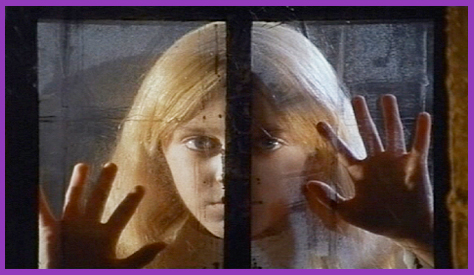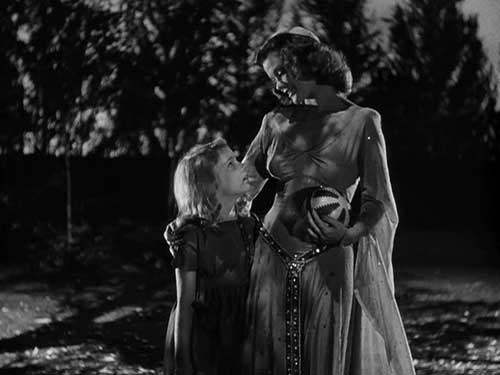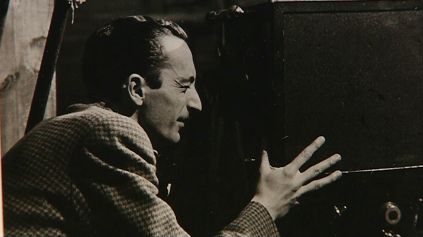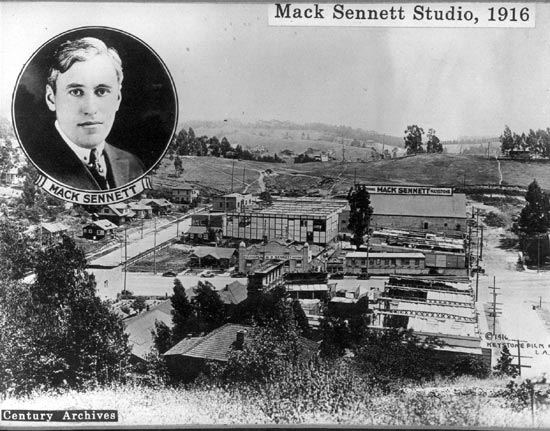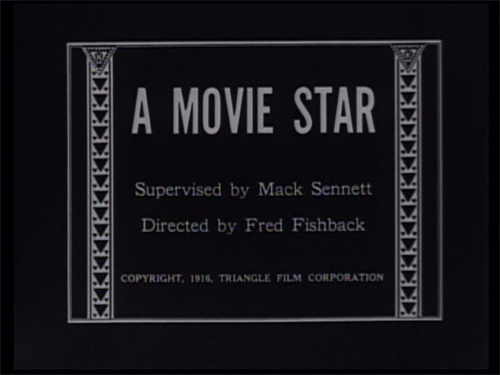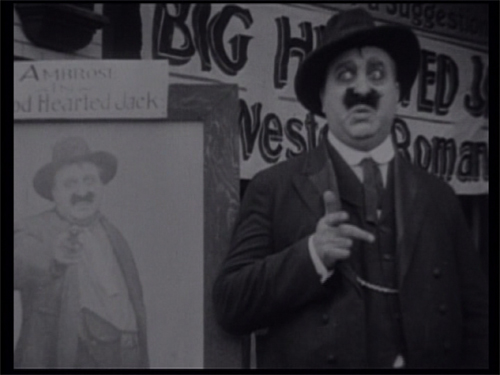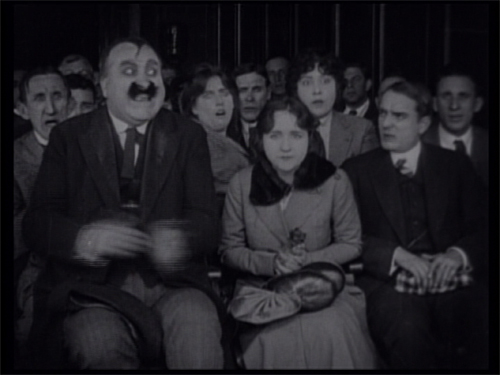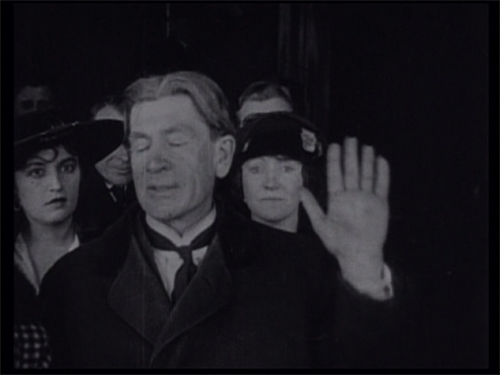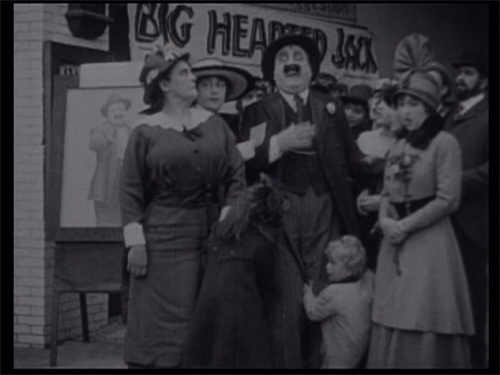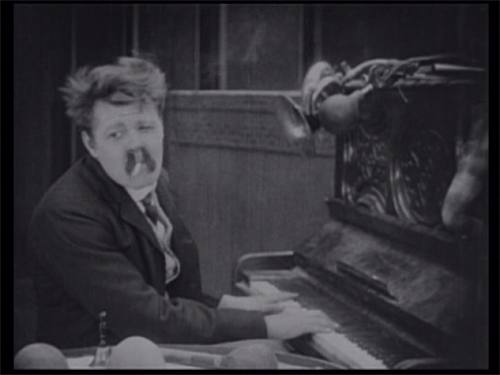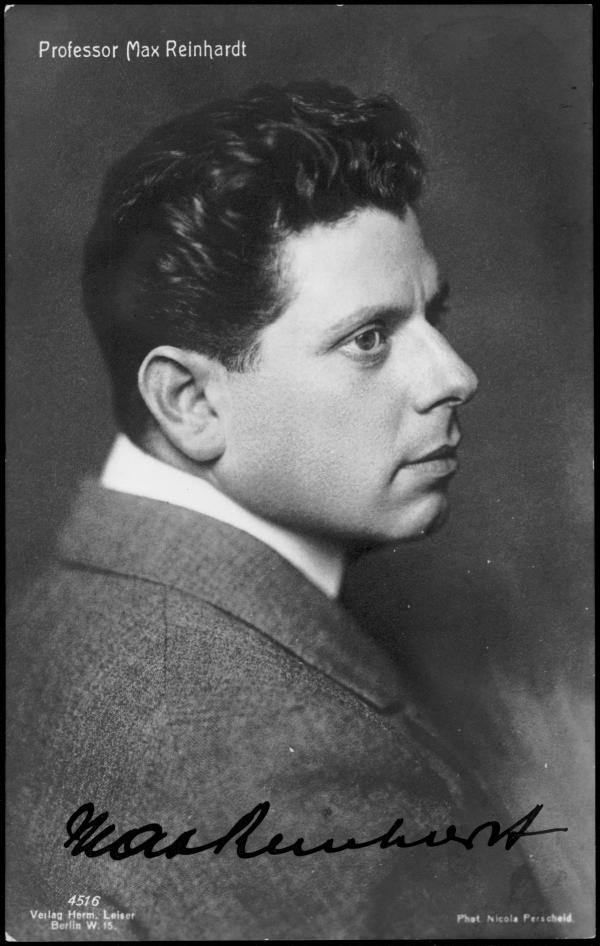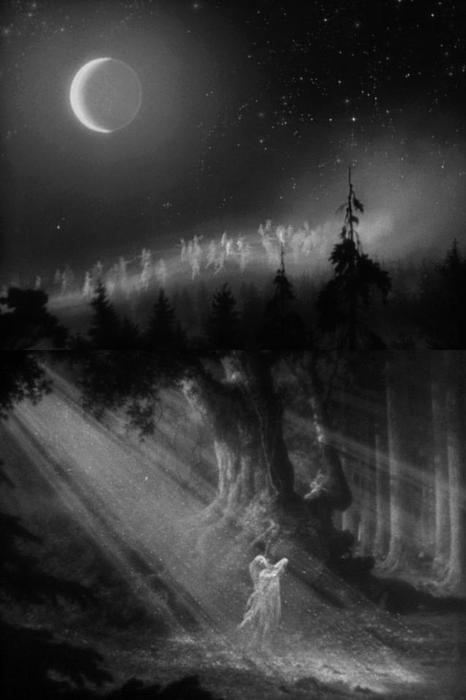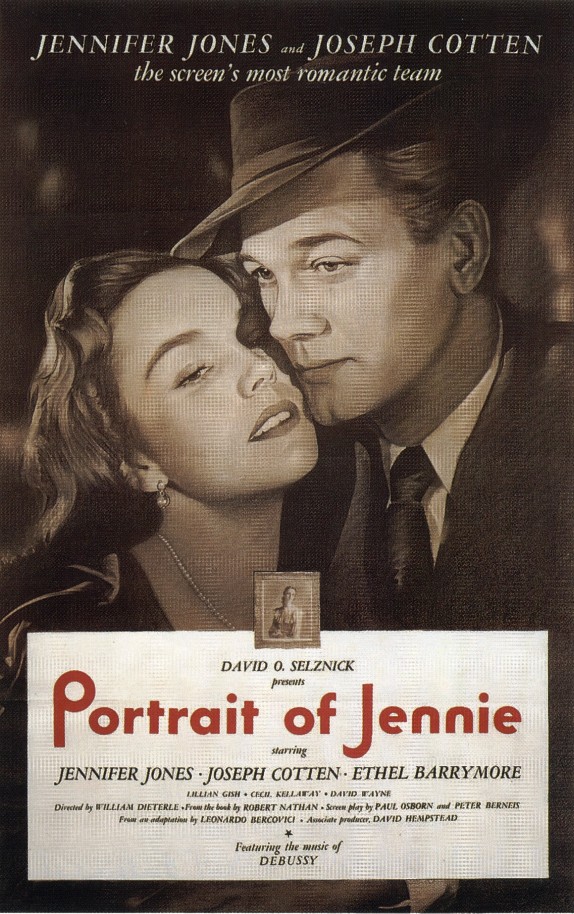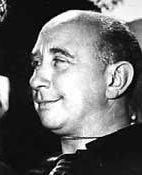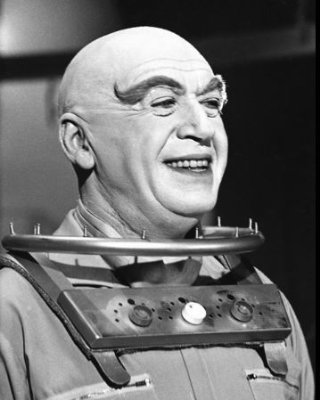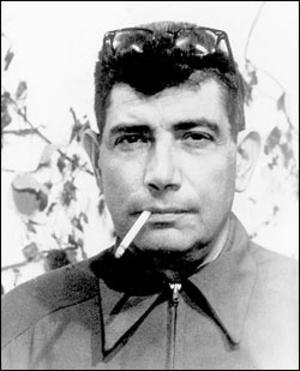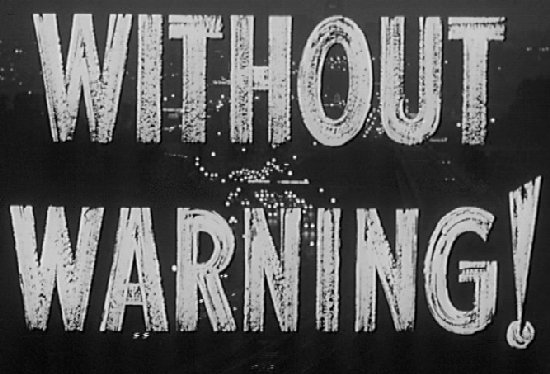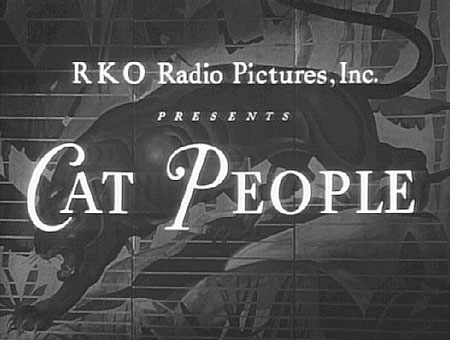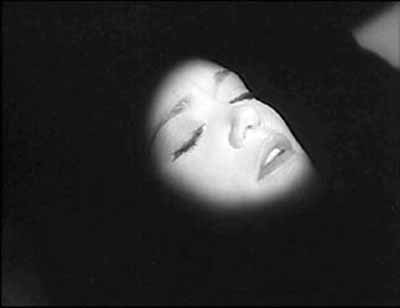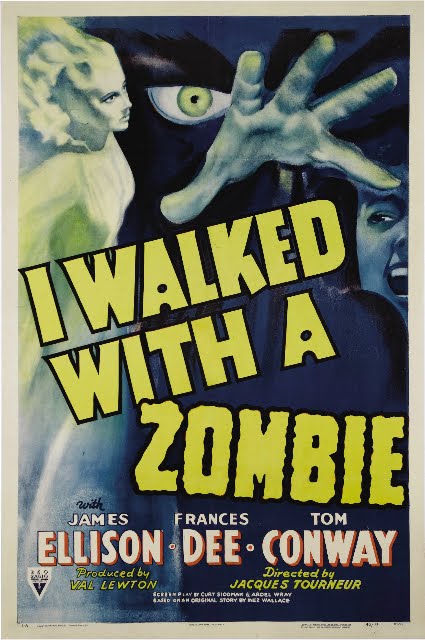
I went, I watched, I walked with I Walked With A Zombie. It was incredible! Really the best way to see this film is in a big theater with 35mm projection! There is no substitute, you pick up so many more nuances, the atmosphere becomes all pervasive, your psyche is opened up to the incredible images and fantasy pours in through your eyes and ears to your very soul! This is how the makers designed the film to work, they didn’t think about TV or video. To say the least it was a moving experience and it clocked in at a rocket fast 70 minutes!

This film is crammed with ideas, Lewton and his team did exhaustive research and it shows, the music, the dancing, the Afro Caribbean culture give Zombie a rock hard foundation on which to build a castle of fantasy and terror. But terror in a Fairy Tale like way, sort of innocent yet savage, ruthless as Nature and as pure. This film is a textbook of studio filmmaking at a peak of artistry. The B&W photography,the lighting, the production design, the process photography, amazingly executed.

The Great RKO Artisans of Storytelling-P.S. Check out the legal disclaimer at the bottom of the frame for a joke.
We start in Canada, in a Victorian office, snow falls furiously outside the window. Our Heroine (Francis Dee) is ta nurse being offered a job in the Caribbean, one stock shot of a big sailing schooner later we’re on board (thanks to process photography) with the boss of the plantation and his men, who sing a strange island song in the background. The scene here between Francis Dee and Tom Conway is a brilliantly written piece, it expertly sets the mood for the rest of the film. “It’s so beautiful” Dee thinks to herself only to be interrupted a second later by Conway telling her “It isn’t beautiful” Dee answers “You read my mind” , Conway replies, “You see those flying fish, they’re jumping in terror to escape being eaten, that phosphorescence in the water? The putrescent bodies of dead organisms, This is a place of death.” He sets a tone of unease, he unsettles Dee by reading her mind(supernatural), he belittles her naivety, he fascinates her with his honesty. That sets up their complicated relationship for the rest of the film. All in a couple of minutes.
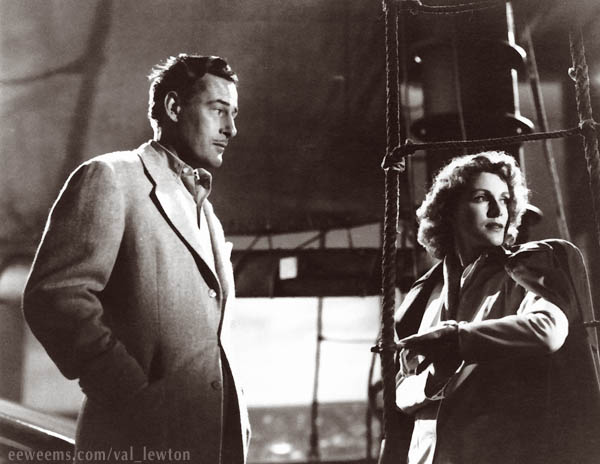
Then theirs a scene in the town of San Sebastian, probably the RKO backlot dressed up by D’Agostino and Keller. They filmed here maybe a day or two at most, it’s used a couple of times in the film but sparingly, you really get the impression that everything was planned out and organized with maximum efficiency, the budget was $134,000! A scene in a buggy (process) as an old black islander drives Dee to the plantation is also illuminating. The driver tells her how the slaves were brought to the island in chains on a ship, the figurehead of which is now prominently displayed at the plantation. “It’s so beautiful here” “He replies “If you say so miss, if you say so” She naively ignores the whole slavery aspect, the inherent inhumanity, brutality, focusing on the lush scenery. Lewton’s comment on Western insensitivity.
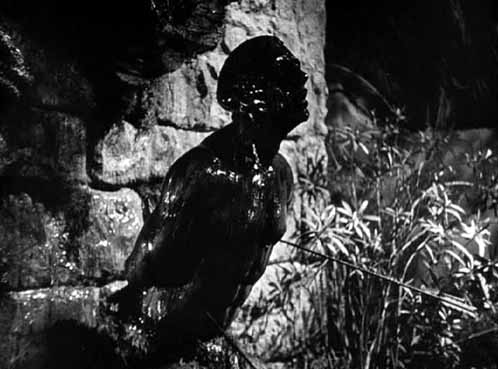
Figurehead of St. Sebastian, a representation of the slave based history of the island
The story continues and some of the high points are, the first night at the plantation, Dee is awakened by a woman crying, she goes out to investigate and enters the Tower where the wife of Ellison is kept. It’s pretty creepy, the tower set is particularly effective consisting of a stone stairway slashing across a black frame. Dee climbs the stairs and is confronted by the wraithlike zombie wife of Conway, Jessica Holland. The zombie advances upon her and I swear they applied a skull like make up to her face, it’s shot in a long shot so you can’t see her too clearly but I want to watch it again and check.
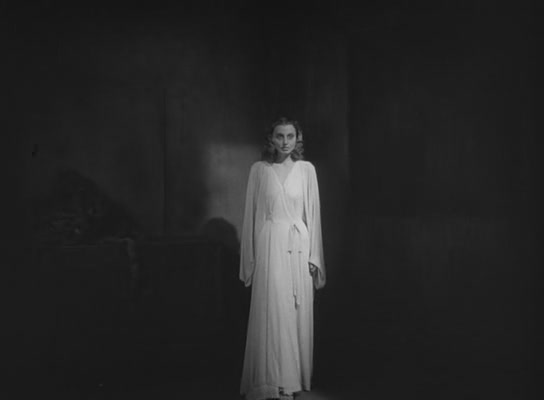
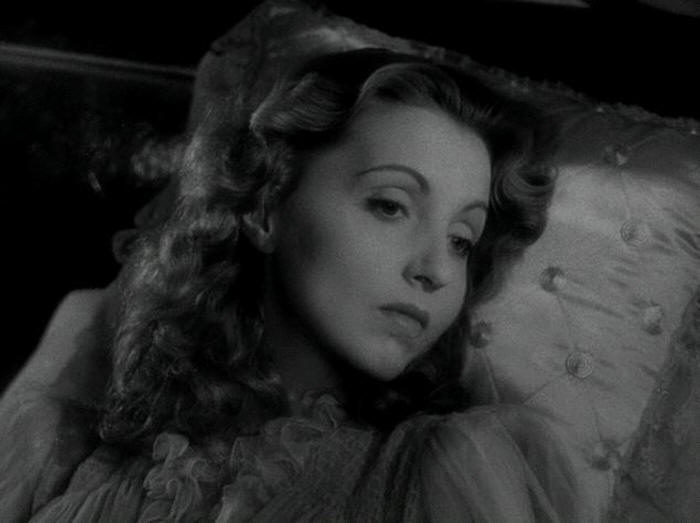
The next great set piece and my favorite scene of the film is when Dee brings Mrs. Holland to a Voodoo ritual, she leads the entranced blonde through a swamp, all artfully created on soundstages, the native drums beat ominously, they come across several talismans , a cow skull, a hanging goat, a human skull and finally a huge zombie guard, he reminds me of Gort from Day The Earth Stood Still.
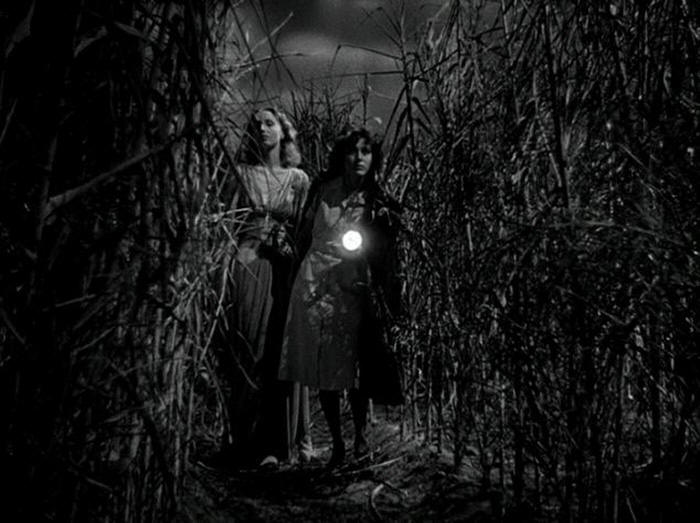


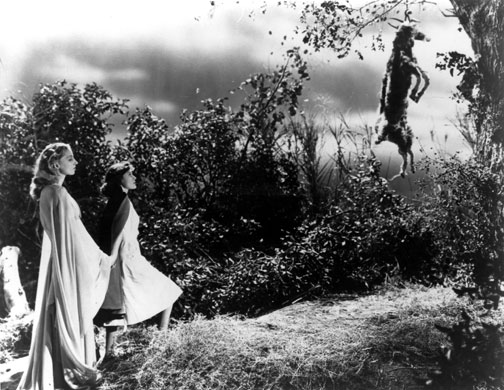
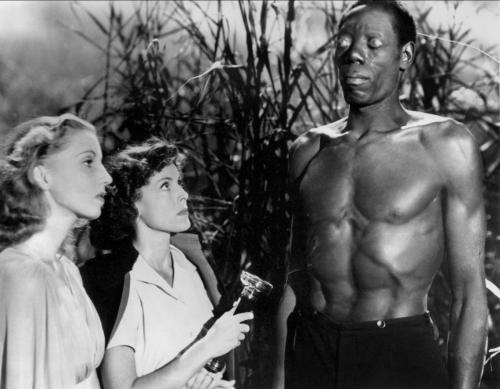
But due to their protective amulets , pinned to them by the maid at the plantation, they pass unmolested. The ceremony is great, excellent music by real voodoo drummers and authentic dancing that must have blown peoples minds back in 1943. Here’s another aspect of this film that added to it’s tabu appeal, the underlying hint of interracial sex, the way the maid wakes Dee up by tickling her foot, the fascination of the voodoo priests for the tall beautiful white zombie. The confession by Conway’s mother that she participated in zombie rituals and was possessed by a voodoo god! This is 1943! Lewton so skillfully implies all this and gets away with it! Genius! Also he employed a lot of black actors, including Sir Lancelot, the calypso singer who Lewton also used in Curse Of The Cat People and Theresa Harris who is wonderful as the maid Alma. She is funny and sexy and appears in Out Of The Past and many other classic films.

The beautiful Theresa Harris-she is the crying woman that awakened Francis Dee on her first night on the Island. She was crying because her sister had a baby. The Islanders cry at a birth and rejoice at a death. The only freedom from their slavery.
There’s a transitional device used in this film that’s very subtle. I first noticed this technique in Cat People which was edited by the same person, Mark Robson. It’s a sort of a wipe, but it’s as if a black shape passed in front of the lens, in Cat People it feels like a black panther crossed very close to the camera, it creates a subconscious sense of unease, you’re not really aware of what happened, it seems like a quick fade out fade in but it isn’t. Watch Cat People and Zombie carefully and try to catch it. In Zombie it occurs late in the film, a transition between Dee talking to Conway at night at the plantation and Mrs. Holland trying to leave. Somewhere around there. A very subtle masterful stroke that I’ve never heard anyone speak of. The end of the film is a brilliant study in visual poetry, economy of storytelling, and the power of an ending. The drunk half brother kills Mrs. Holland with an arrow from the figurehead in the garden, just as the voodoo priest pierces the doll of Mrs. Holland with a pin.
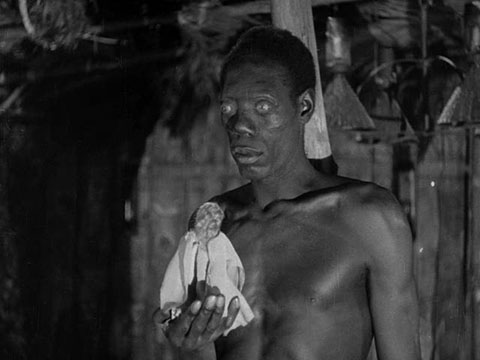
The half brother(James Ellison) carries Mrs. Hollands body away pursued by the giant zombie guardian. He walks into the ocean to escape the zombie only to be swallowed up by pounding waves.

Dissolve to native fisherman spearfishing in the shallows ( a tank on a sound stage artfully lit and decorated) as they fish and sing they discover Mrs. Holland’s body,
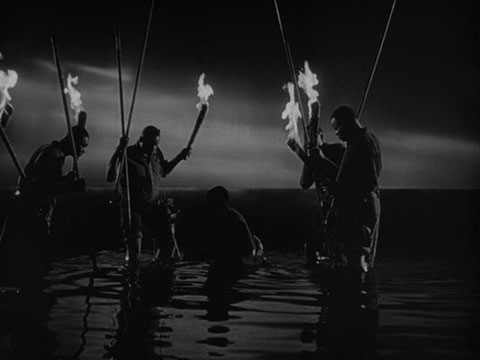
Studio Artifice
dissolve to them carrying her in a funeral procession back to the plantation where Dee and Conway wait. The END! No dialog explaining what happened, no happy ending with Dee and Holland rushing off to get married, we don’t know what they’re going to do, it’s ambiguous and it’s great! As a matter of fact there is no dialog at all in the last 10 minutes of the film! Pure visual poetry accompanied by music! Try that today. All I can say is thank you LACMA for showing this film in a theater, with 35mm projection! And every film lover out there should see it this way, it’s a blessing!
